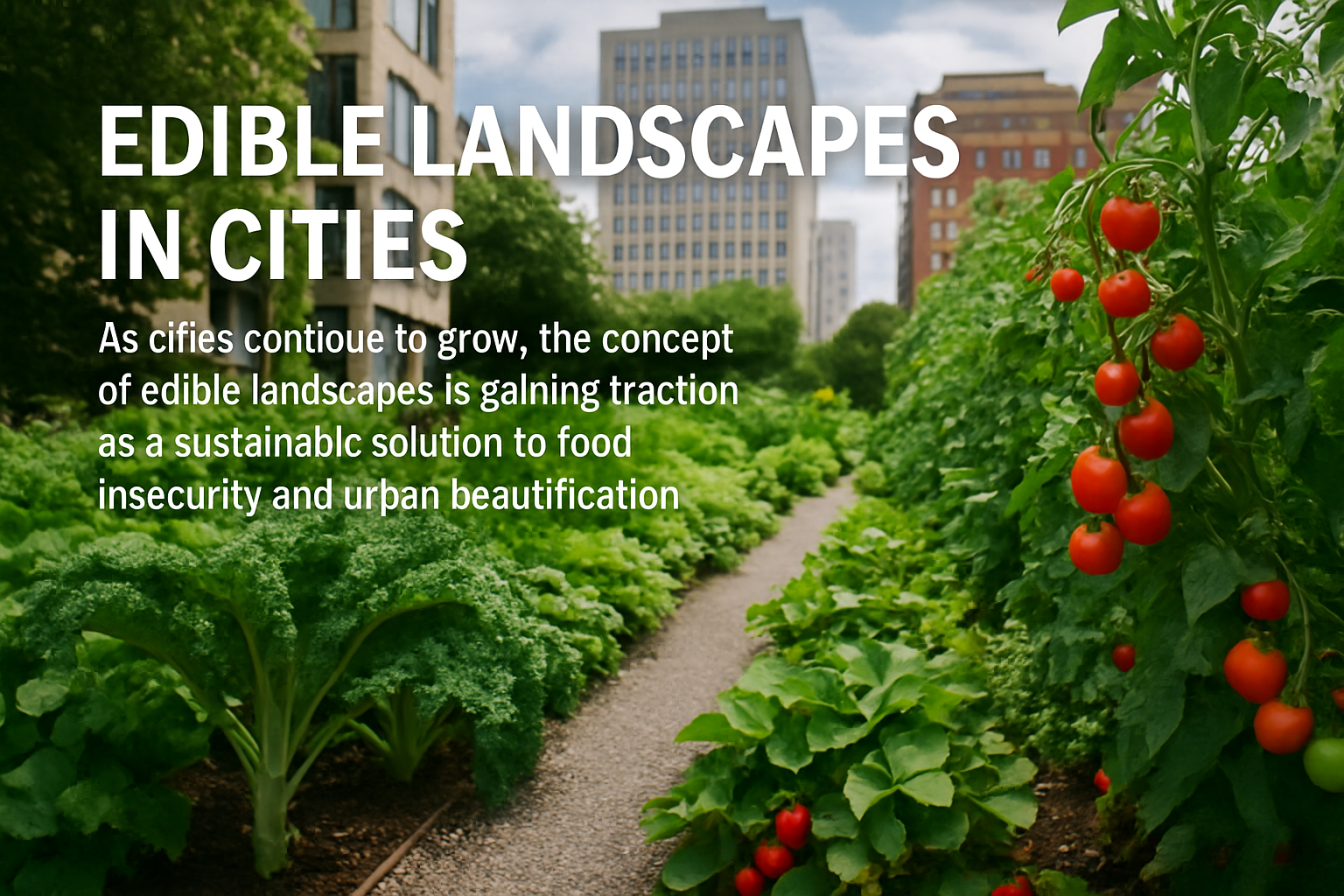Location
Mount Vernon, WA 98274
Location
Mount Vernon, WA 98274

As cities continue to grow, the concept of edible landscapes is gaining traction as a sustainable solution to food insecurity and urban beautification. This article explores how integrating food-producing plants into urban environments can foster community engagement and improve local ecosystems.
With urbanization on the rise, the integration of edible landscapes into city planning offers a promising pathway to address food insecurity while beautifying neighborhoods. Edible landscapes refer to the inclusion of food-producing plants-such as fruit trees, vegetable gardens, and herb patches-within public and private spaces. This approach not only enhances the aesthetic appeal of urban areas but also promotes sustainability by reducing the carbon footprint associated with transporting food.
Recent initiatives in cities like San Francisco and Toronto have demonstrated the potential benefits of these landscapes. Community gardens, often located in vacant lots or parks, have transformed underutilized spaces into vibrant hubs for social interaction, education, and food production. These gardens not only provide fresh produce but also serve as platforms for community members to learn about sustainable gardening practices.
One of the most notable examples of edible landscaping can be seen in the New York City-based initiative called GrowNYC. This program encourages residents to convert patches of their yards into productive gardens, effectively turning the urban landscape into a source of food. The initiative also emphasizes the importance of local biodiversity, as incorporating native plants can help support pollinator populations and enhance the overall health of urban ecosystems.
Beyond beautification and food production, edible landscapes foster a sense of community and resilience. By bringing neighbors together to cultivate and harvest crops, these spaces create connections that strengthen social bonds. They also empower individuals by teaching them valuable skills related to gardening and sustainable practices. In times of crisis-such as during the COVID-19 pandemic-community gardens have proven invaluable, providing not only sustenance but also a sense of purpose and belonging.
While the benefits of edible landscapes are clear, challenges remain in integrating these concepts into urban planning. Zoning laws and land use regulations often hinder the establishment of community gardens or edible landscapes. However, advocacy groups are working tirelessly to change these regulations, pushing for policies that support urban agriculture. In addition, raising awareness about the importance of edible landscapes can help garner public support, encouraging city officials to embrace this innovative approach.
As we look toward the future, the inclusion of edible landscapes in urban environments presents an exciting opportunity to rethink how we interact with our cities. By prioritizing sustainability, community engagement, and local food production, we can cultivate not just edible gardens, but also a new way of living in harmony with nature. The quiet revolution of edible landscapes is not just about growing food; it’s about growing communities.